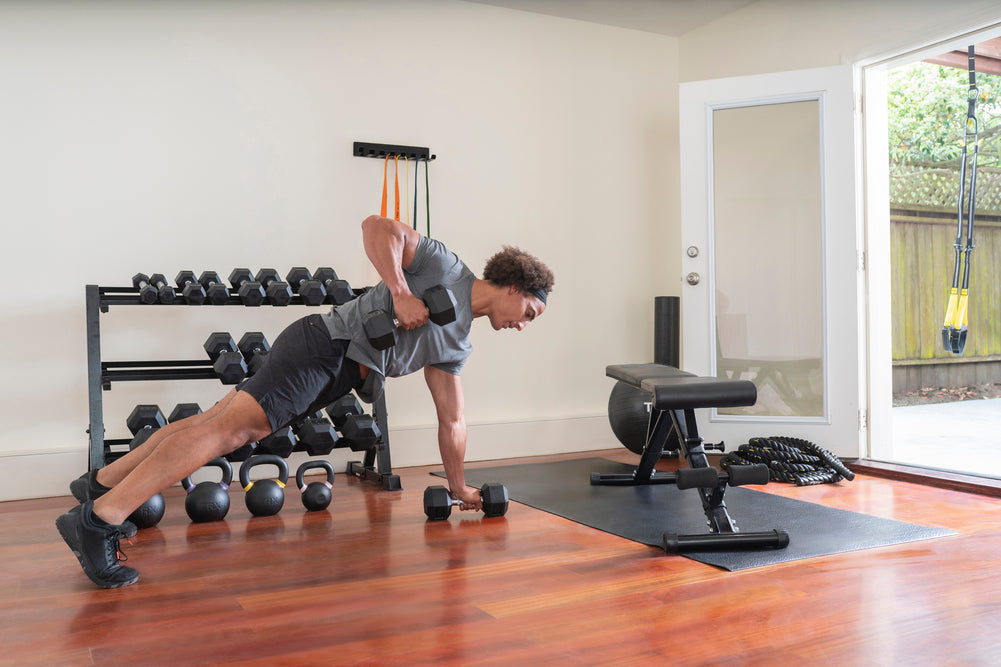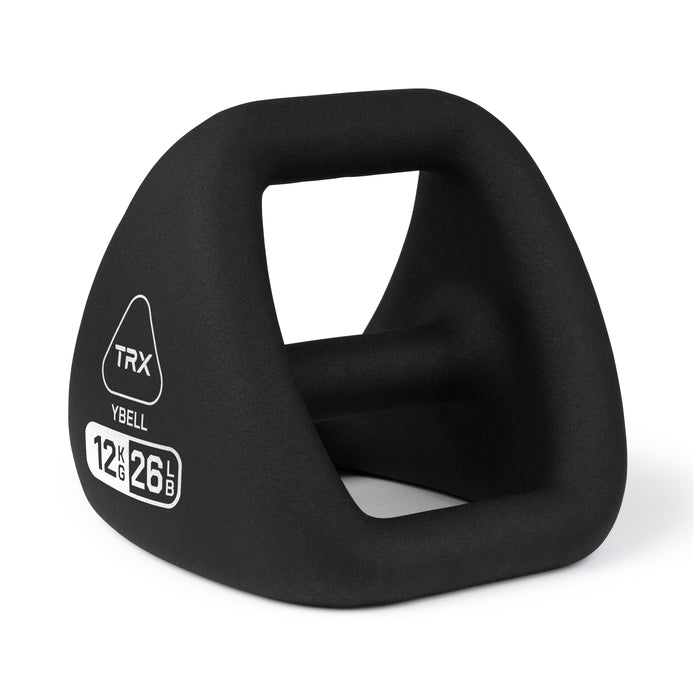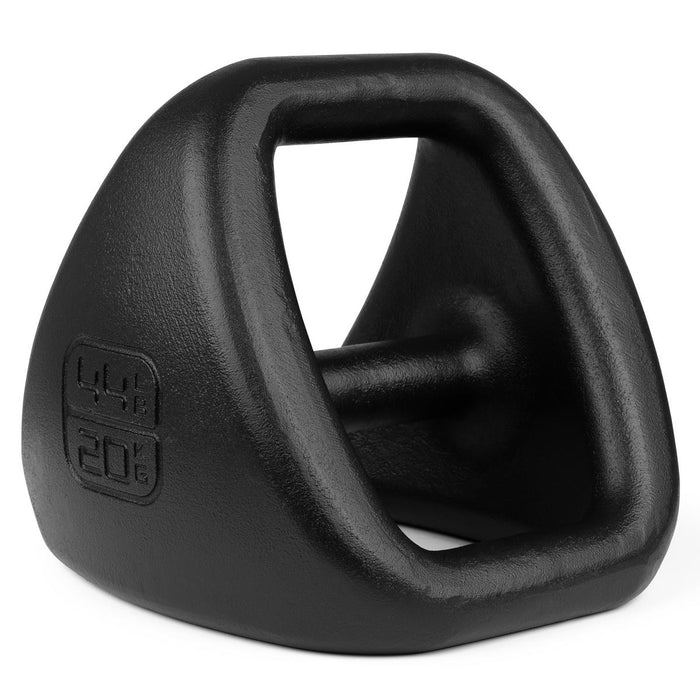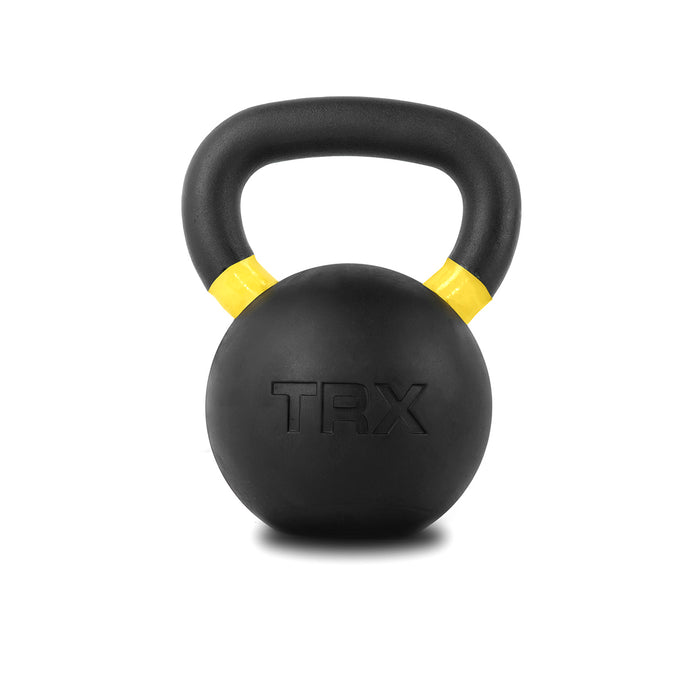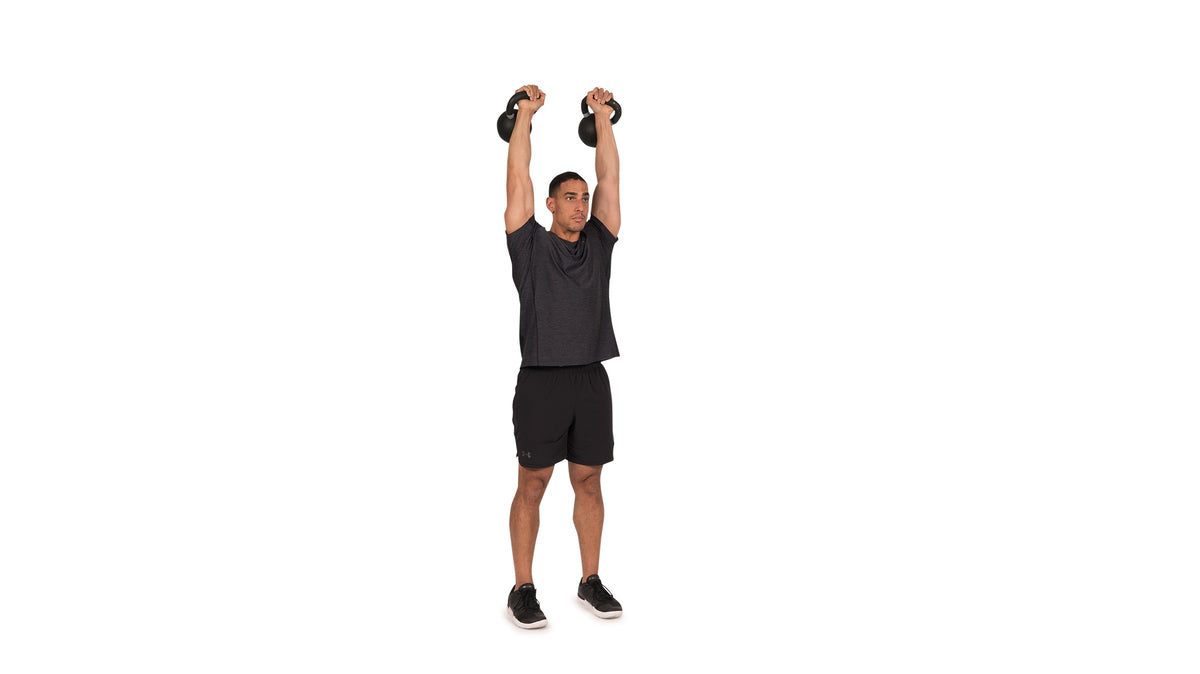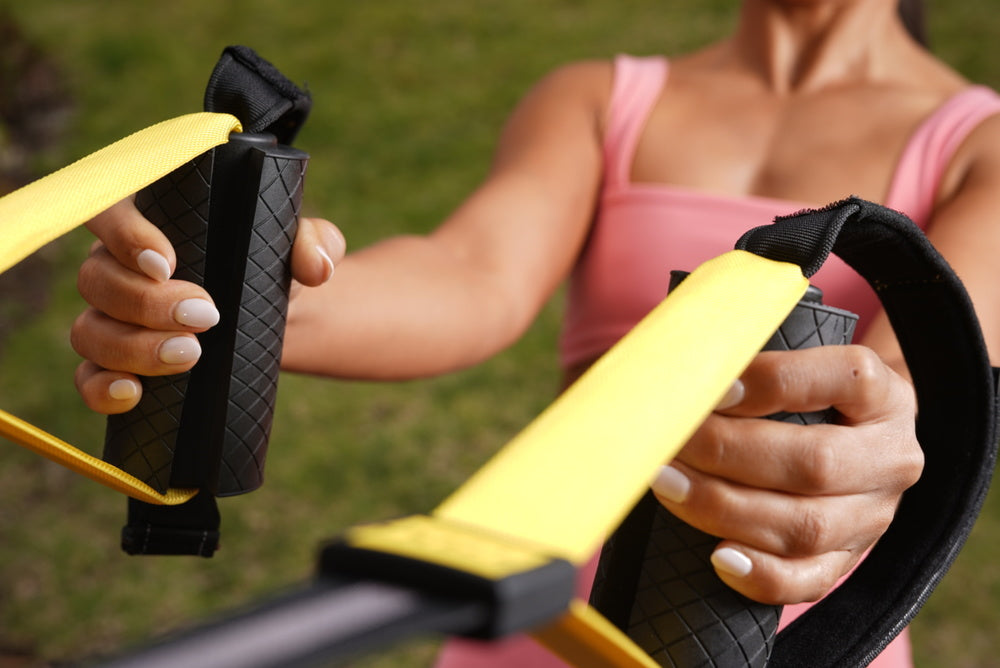Believe it or not, dumbbells are one of the most versatile tools to use for your pull exercises. Aside from the traditional bicep curl, there are a number of exercises that can effectively build muscles around the back, shoulder, and arms. Today, we’ll show you the best dumbbell pull exercises to add to your workout. Let’s get started!
Can You Do Pull Day With Dumbbells?
Yes, you can definitely do a pull-day workout with dumbbells. In fact, dumbbells can be an effective tool for exercising your upper back and biceps. Furthermore, when using dumbbells, the entire core has to be engaged for balance, stability, and kinesthetic awareness. This is an added benefit to using dumbbells in place of, or in addition to other equipment, (ie, barbells, selected machine, and cable machines).
The same applies for kettlebells and YBells. They engage your entire core to keep your balanced while exercising in place. In fact, the YBells provide more utility since their unique design allows them to act like a dumbbell, kettlebell, and slam ball in one.
Best Dumbbell Pull Exercises
Now that we've covered the formalities, let's explore the ten best dumbbell pull exercises to elevate your next gym session. Want to discover which dumbbell exercises align perfectly with your fitness level and goals? Our quick assessment quiz can create a personalized workout plan just for you! These proven movements will help you build strength and muscle, whether you're working with basic equipment or premium gear like TRX hex rubber dumbbells.
Take Our Training Quiz
10. Single-Arm Dumbbell Row

The single-arm dumbbell row is an effective exercise that primarily targets the muscles of the back, including the lats, rhomboids, and traps, as well as the biceps and forearms. Some benefits of the single-arm dumbbell row include improved posture and increased back strength.
The Movement of a Single-Arm Dumbbell Row
The movement for the single-arm dumbbell row involves pulling the weight up towards the torso while keeping the elbow close to the body and the back straight. The movement should be controlled and deliberate, with a focus on squeezing the muscles of the back at the top of the movement. The spine should remain stable while the shoulder complex and elbow are mobile.
How to Do a Single-Arm Dumbbell Row
Here are the steps to perform a single-arm dumbbell row:
- Start by placing a dumbbell on the floor next to a bench.
- Stand facing the bench with your feet shoulder-width apart and your knees slightly bent.
- Bend forward at the hips and place your left hand on the bench for support.
- Pick up the dumbbell with your right hand and let your arm hang straight down.
- Keeping your back straight and your core engaged, pull the dumbbell up towards your chest, squeezing your shoulder blade towards your spine.
- Pause for a moment at the top of the movement, then lower the dumbbell back down to the starting position.
- Repeat for the desired number of reps, then switch sides and perform the exercise with your left arm.
Tips:
- Avoid twisting your torso or rounding your back during the movement.
- Keep your elbow close to your body and aim to pull the weight towards your hip rather than your chest.
- Control the weight on the way down and avoid swinging the weight.
- Exhale as you pull the weight up and inhale as you lower it down. Breathing is essential to proper lifting mechanics.
9. Zottman Curl
Zottman dumbbell curls are a type of bicep curl exercise that targets the biceps, forearms, and brachialis muscles. The exercise involves a combination of a traditional bicep curl and a reverse wrist curl, making it a versatile exercise that can help to strengthen and tone multiple muscle groups.
The Movement of a Zottman Curl -
The spine is stable while the elbow and wrist are mobile. The movement involves frontal and transverse plane flexion/extension of the elbow and internal and external rotation of the wrist.
How to Do a Zottman Curl
- Begin by standing with your feet shoulder-width apart and holding a dumbbell in each hand with your palms facing up.
- Perform a traditional bicep curl by bending your elbows and bringing the weights up toward your shoulders.
- At the top of the movement, rotate your wrists so that your palms are facing down.
- Perform a reverse wrist curl by lowering the weights towards your thighs, and bending your wrists so that your palms face the ground.
- At the bottom of the movement, rotate your wrists back so that your palms are facing up again.
- Lower the weights back down to the starting position and repeat for the desired number of reps.
Here are some tips to maximize your progress when doing a zottman curl:
- Keep your elbows close to your sides throughout the movement.
- Focus on squeezing your biceps and forearms at the top of the movement.
- Use a weight that challenges you but allows you to maintain proper form throughout the exercise.
8. Dumbbell High Pull
The dumbbell high pull is a compound exercise that targets several muscle groups in the body, including the shoulders, upper back, traps, and arms. This exercise is great for targeting deltoids and traps as well. You should especially add this exercise to your pull day if you want to increase your calorie burn.
The Movement of the Dumbbell High Pull
The dumbbell high pull is an upper-body pulling movement that incorporates the entire kinetic chain. The movement utilizes pulling strength to move the dumbbell upward with power and strength. The spine should be stable and the elbows should be mobile.
How to Do a Dumbbell High Pull
- Begin by standing with your feet shoulder-width apart and holding a dumbbell in each hand at your sides.
- Squat down slightly and then explosively jump up while raising the weights up towards your shoulders.
- As you raise the weights, keep your elbows high and out to the sides and keep your wrists straight.
- At the top of the movement, the weights should be at shoulder height and your elbows should be out to the sides.
- Lower the weights back down to the starting position and repeat for the desired number of reps.
Tips:
- Use a weight that challenges you but allows you to maintain proper form throughout the exercise.
- Keep your core engaged and your back straight throughout the movement.
- Exhale as you raise the weights up and inhale as you lower them back down.
- Avoid shrugging your shoulders or using momentum to lift the weights.
7. Dumbbell Rows
The dumbbell row is a compound exercise that targets several muscles in the upper body. The primary muscles worked during the exercise include the lats, rhomboids, and traps. Not only do dumbbell rows build your back and overall upper body, but you can improve grip strength as well.
The Movement of Dumbbell Rows
The movement of a dumbbell row includes starting in a plank with a stable spine, stable hips, and mobile elbows and shoulders.
How to Do Dumbbell Rows
- Begin by selecting a dumbbell of appropriate weight and place it on the floor in front of you.
- Stand with your feet shoulder-width apart and hinge forward at the hips, keeping your back flat and your core engaged. Your torso should be almost parallel to the floor.
- With one hand, pick up the dumbbell from the floor and let it hang straight down from your arm. Keep your arm fully extended.
- Exhale and pull the dumbbell up towards your ribcage, keeping your elbow close to your body. The motion should be controlled and the weight should be lifted with your back muscles.
- At the top of the motion, pause for a moment and squeeze your shoulder blades together.
- Inhale and slowly lower the weight back to the starting position, with your arm fully extended.
- Repeat the motion for the desired number of repetitions on one arm, then switch to the other arm.
- Remember to keep your core engaged and your back flat throughout the movement to avoid any strain or injury.
It's important to use proper form and technique while performing a dumbbell row to target the correct muscles and avoid injury. Here are a few tips to keep in mind:
- Keep your elbow close to your body throughout the motion to engage your back muscles properly.
- Avoid swinging the weight or using momentum to lift it up.
- Maintain a flat back and keep your core engaged throughout the exercise.
- Squeeze your shoulder blades together at the top of the motion to engage your upper back muscles.
- Use an appropriate weight that challenges you but allows you to maintain proper form and control throughout the exercise.
6. Dumbbell Pullovers
The dumbbell pullover is an exercise that primarily targets the muscles of the upper body, particularly the chest, lats, and triceps. While doing the movement, your spine and hips should be stable and your shoulders should be mobile.
How to Do Dumbbell Pullovers
- Lie down on a flat bench with your feet firmly planted on the floor and your head resting on the bench. Your upper back should be in contact with the bench.
- Hold a dumbbell with both hands, using an overhand grip with your palms facing upwards. You can also hold the dumbbell with one hand, but using both hands can provide more stability.
- Extend your arms up over your chest, keeping a slight bend in your elbows. This is the starting position.
- Inhale and slowly lower the dumbbell behind your head, keeping your arms fully extended. You should feel a stretch in your chest and lats.
- Pause for a moment at the bottom of the motion, then exhale and use your chest and lats to lift the weight back up to the starting position.
- Repeat the motion for the desired number of repetitions.
To get the most out of your dumbbell pullovers, keep these tips in mind.
- Keep your arms straight and your elbows locked throughout the exercise.
- Avoid using momentum to lift the weight up and focus on using your chest and lats to pull the weight.
- Keep your core engaged and your lower back pressed into the bench throughout the exercise to avoid any strain or injury.
- Use an appropriate weight that challenges you but allows you to maintain proper form and control throughout the exercise.
- If you feel any pain or discomfort in your shoulders or lower back, stop the exercise immediately and consult with a fitness professional or medical expert.
5. Dumbbell Deadlifts

The dumbbell deadlift is a compound exercise that primarily targets the muscles of the lower body, particularly the hamstrings, glutes, and quadriceps. This is one of the few exercises on this list that can also build your legs in the process.
How to Do Dumbbell Deadlifts
- Stand with your feet shoulder-width apart and the dumbbells on the ground in front of you.
- Squat down and grasp the dumbbells with an overhand grip.
- Lift the dumbbells off the ground by extending your hips and knees, keeping your back straight and your core engaged.
- Stand up straight with the dumbbells in your hands, then lower them back down to the ground by bending your hips and knees.
- Repeat the motion for the desired number of repetitions.
It's important to use proper form while dumbbell deadlifts. That way, you can target the right muscles and avoid injuring yourself. Keep your back straight and your core engaged. Use an appropriate weight that challenges you but allows you to maintain proper form and control throughout the exercise.
4. Dumbbell Reverse Flys

Dumbbell reverse flys are an isolation exercise that primarily targets the muscles of the upper back, including the posterior deltoids and the rhomboids. This exercise is great for improving the overall upper body aesthetic. Make sure to stabilize your spine while doing the movement.
How to Do Dumbbell Reverse Flys
- Hold a pair of dumbbells in each hand with an overhand grip and stand with your feet shoulder-width apart.
- Bend forward at the hips, keeping your back straight and your core engaged.
- Lift the dumbbells out to the sides, keeping your elbows slightly bent and your shoulders down and back.
- Squeeze your shoulder blades together at the top of the movement, then lower the dumbbells back down to the starting position.
- Repeat the motion for the desired number of repetitions.
This exercise is all about movement. Try to feel the pinch in your back as you raise the dumbbells up. It’s important to not use too much weight. Otherwise, you risk injuring your smaller muscle groups.
3. Dumbbell Shrugs
Dumbbell shrugs are a common exercise for targeting the upper trapezius muscles in the back and the levator scapulae muscles in the neck. You can also exercise the lats while also improving shoulder stability.
How to Do Dumbbell Shrugs
- Stand with your feet shoulder-width apart and hold a pair of dumbbells at your sides.
- Slowly lift your shoulders straight towards your ears, keeping your arms and elbows locked.
- Hold the contraction at the top of the movement for a second, then slowly lower your shoulders back down to the starting position.
- Repeat the motion for the desired number of repetitions.
When doing shrugs, make sure to feel the resistance when lowering your shoulders. It’s all about the mind-muscle connection if you want to really build strength.
2. Renegade Rows

Renegade rows are a challenging exercise that primarily targets the muscles of the upper back, shoulders, and core. The exercise also targets your abs and promotes core stability.
How to Do Renegade Rows
- Start in a high plank position with your hands on a pair of dumbbells, with your wrists directly under your shoulders and your feet hip-width apart.
- Brace your core and keep your hips level as you lift one dumbbell off the ground, pulling it up towards your chest while keeping your elbow close to your body.
- Pause for a second at the top of the movement, then lower the dumbbell back down to the starting position.
- Repeat the motion with the other arm, alternating sides for the desired number of repetitions.
1. Dumbbell Curls

Dumbbell curls are one of the first exercises you think of when you associate pull exercises with weights. The exercise trains your biceps and forearms, but it can also improve grip strength and even upper body aesthetics.
How to Do Dumbbell Curls
Here's how to perform dumbbell curls:
- Stand upright with your feet shoulder-width apart and hold a pair of dumbbells at your sides, palms facing forward.
- Keeping your elbows close to your body, curl the dumbbells up towards your shoulders, rotating your palms inward as you lift the weights.
- Pause at the top of the movement, then slowly lower the weights back down to the starting position.
- Repeat for the desired number of repetitions.
Sample Pull Workout With Dumbbells
Now that we’ve covered the best dumbbell pull exercises, it’s time to build a workout that you can do at the gym. Here is a sample dumbbell pull day workout that you can try using the exercises above.
- Dumbbell Rows - 3 sets of 8-12 reps
- One Arm Dumbbell Rows - 3 sets of 8-12 reps per arm
- Renegade Rows- 3 sets of 8-12 reps
- Dumbbell Shrugs - 3 sets of 12-15 reps
- Dumbbell Hammer Curls - 3 sets of 8-12 reps
- Alternating Dumbbell Curls - 3 sets of 8-12 reps per arm
Other Exercises to Include in Your Pull Workout
You don’t want to limit yourself to just dumbbells on pull day. Here are some other exercises that you can include during your workout:
- Lat Pulldowns
- Pullups
- Deadlifts
- Kettlebell Renegade Rows
Deadlifts and pullups are both great compound exercises to get your workout started. They’re also the most effective at building strength and increasing muscle mass.
P.S. get other dumbbell workouts like the one above with TRX App. Access hundreds of free workouts from certified professionals today.
Main Takeaways
You’re going to use dumbbells a lot during your pull workout–and for good reason too. Dumbbells are efficient at building muscle and increasing overall strength, all while providing a number of other benefits.
Next time you’re at the gym, try using our sample dumbbell pull workout and let us know what you think. Don’t forget to add some other pull exercises in there as well!

